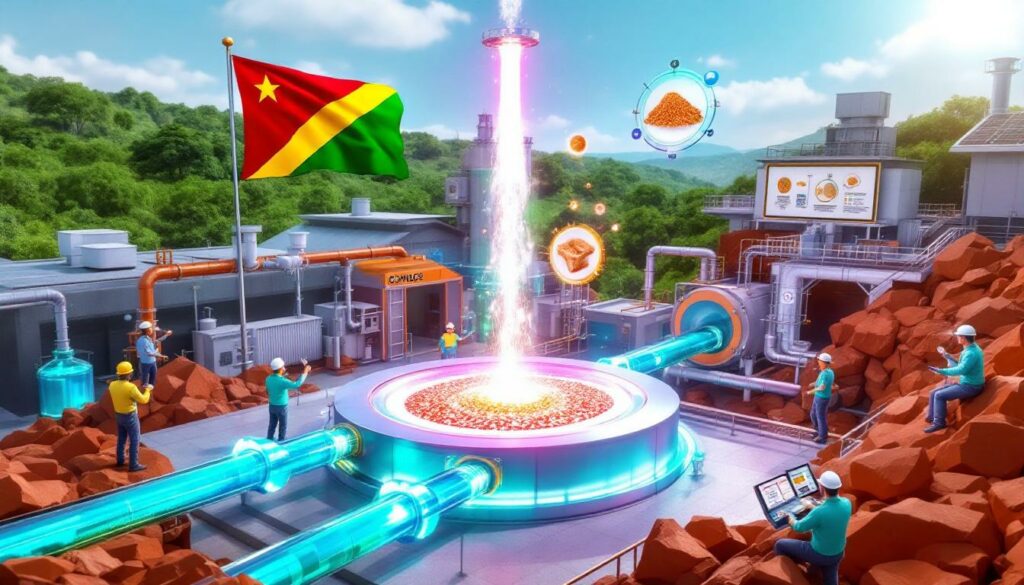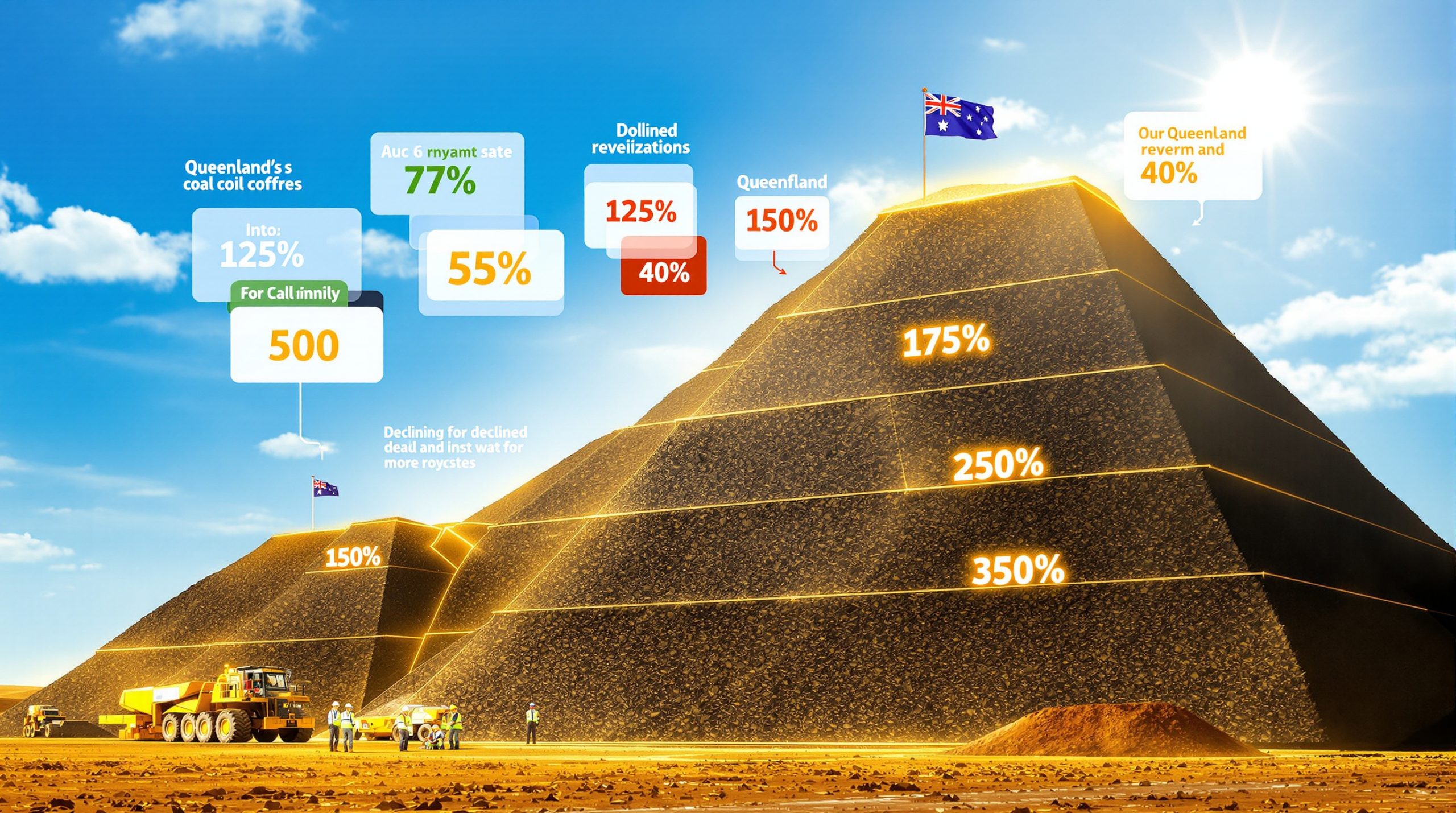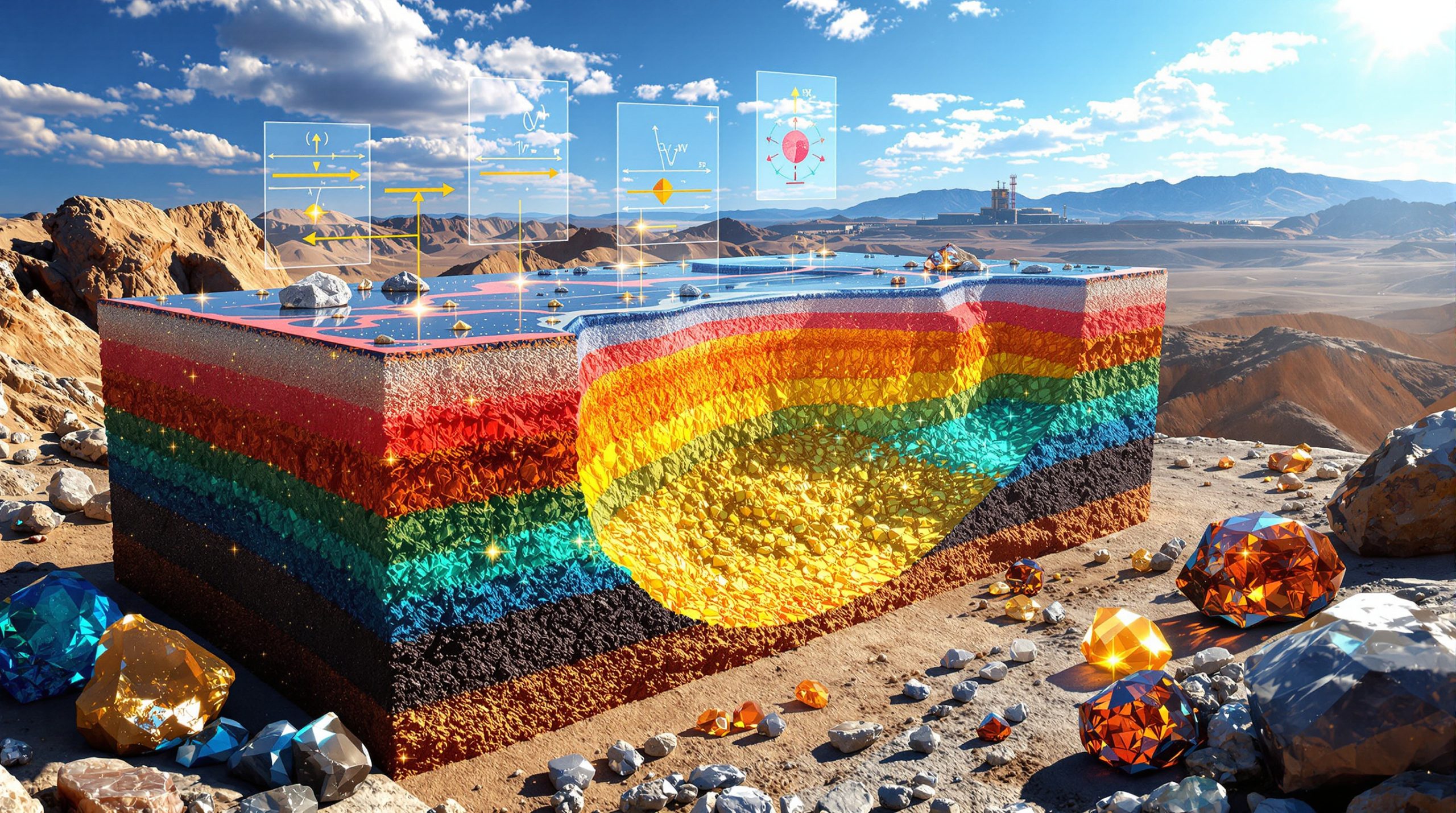Hydrometallurgical Copper Smelter in the DRC: Investment Analysis and Strategic Impact
Dowstone Technology's recent announcement to invest in copper processing capacity in Africa represents a significant strategic move in the global minerals market. This analysis examines the technical, financial, and strategic implications of this investment decision against the backdrop of evolving copper price insights.
What is Dowstone Technology's New Copper Project in the DRC?
Dowstone Technology has announced plans to invest up to $165 million in constructing a 30,000-tonne annual capacity copper cathode hydrometallurgy smelter in the Democratic Republic of Congo (DRC). This strategic investment, announced on July 3, 2025, aims to strengthen the company's position in global copper and cobalt markets while leveraging the DRC's exceptional mineral resources.
Project Scope and Investment Details
The project involves a significant capital commitment with several key parameters:
- Investment ceiling: Up to $165 million (approximately 1.183 billion yuan)
- Annual production capacity: 30,000 tonnes of copper cathode
- Implementation approach: Phased development based on market conditions and demand
- Project status: Currently in planning stage, pending regulatory approvals from both Chinese and DRC authorities
- Operating entity: "Dowstone Copper Mining" (tentative name), to be established through Hong Kong Jianna Co., Ltd.
The investment represents a substantial expansion of Dowstone's processing capacity, complementing its existing DRC operations that currently produce over 40,000 tonnes of copper cathode annually.
Timeline and Implementation Strategy
The project will follow a carefully planned deployment schedule:
- Announcement date: July 3, 2025
- Current status: Planning phase requiring domestic and international approvals
- Implementation strategy: Gradual deployment aligned with market demand and regulatory clearances
- Funding sources: Company's own funds and self-raised capital without significant debt leverage
This phased approach allows Dowstone to maintain financial flexibility while adapting to changing market conditions. According to company statements, "The phased approach allows flexibility in responding to changing market dynamics," highlighting the strategic caution in the implementation plan.
Why is Dowstone Expanding in the Democratic Republic of Congo?
Strategic Resource Advantages
The DRC holds exceptional significance in global copper and cobalt markets, offering Dowstone Technology several compelling advantages:
- Resource abundance: The DRC possesses some of the world's richest copper and cobalt deposits, with geological surveys indicating the Katanga copper belt contains grades averaging 3-5% copper – significantly higher than the global average of 0.6%
- Supply chain security: As Dowstone stated, "Establishing a smelter in the DRC leverages its unique resource advantages, ensuring stable and secure raw material supply"
- Vertical integration: The project complements Dowstone's existing DRC operations through MJM and MMT subsidiaries
- Cost optimization: Proximity to mining operations reduces transportation expenses and creates what the company calls "a more resilient cost control system"
- Operational synergies: Leverages existing management experience in the region, where Dowstone has already demonstrated operational success
The company's existing operations in the DRC have shown impressive growth, with copper cathode production reaching 40,883 tonnes in 2024, a 32% year-over-year increase.
Market Positioning Benefits
The investment strengthens Dowstone's competitive position through several mechanisms:
- Scale expansion: Increases Dowstone's production capacity by 73%, from the current 40,883 tonnes to potentially over 70,000 tonnes
- Cost competitiveness: Hydrometallurgical processing offers efficiency advantages, particularly for the oxide and carbonate ores common in the DRC
- Market responsiveness: Independent operating entity enhances flexibility to adapt to changing market conditions
- Risk diversification: Spreads operational exposure across multiple facilities while maintaining centralized strategic control
As the company noted, this structure will "enhance competitiveness and market share in global copper markets" while providing operational autonomy.
How Does This Investment Align with Global Copper Market Trends?
Copper Demand Drivers
The global copper market is experiencing structural growth driven by several factors:
- New energy transition: Growing demand from renewable energy infrastructure, with solar and wind installations requiring 4-5 times more copper than traditional power generation
- Electric vehicle growth: Increasing copper requirements for EV manufacturing, with each electric vehicle using 2-4 times more copper than conventional vehicles
- Grid modernization: Expanding electricity networks require substantial copper for transmission and distribution systems
- Industrial applications: Continued demand from traditional manufacturing sectors
Dowstone specifically highlighted that "demand for copper and cobalt continues to grow due to the rapid development of the global new energy industry," positioning this investment to capitalize on surging copper demand.
Supply-Side Considerations
The supply landscape for copper presents strategic opportunities:
- Processing capacity constraints: Limited growth in global smelting capacity has created a processing bottleneck
- Resource nationalism: Countries increasingly seeking to process minerals domestically, with the DRC government encouraging in-country value addition
- ESG considerations: Hydrometallurgical processing typically has lower environmental impact than traditional pyrometallurgy, with 30-40% lower carbon emissions per tonne of copper produced
- Supply chain resilience: Regional processing reduces global logistics vulnerabilities, particularly important given recent disruptions in shipping routes
By establishing processing capacity in the resource-rich DRC, Dowstone is addressing several of these supply-side challenges simultaneously while contributing to global copper supply.
What Financial and Operational Impact Will the Project Have?
Projected Financial Outcomes
While specific project economics weren't disclosed, the investment is expected to deliver significant financial benefits:
- Revenue potential: At current copper prices (~$9,000/tonne), the facility could generate approximately $270 million in annual revenue
- Profit enhancement: Economies of scale expected to improve margins through what Dowstone describes as "a more resilient cost control system"
- Return on investment: Strategic positioning for long-term returns, with hydrometallurgical operations typically achieving 15-20% EBITDA margins
- Cash flow implications: Phased investment approach manages short-term impacts while preserving capital for other strategic initiatives
The company stated the funding "will not affect the normal operation of existing main businesses," indicating confidence in its financial capacity to support this expansion.
Operational Performance Metrics
The operational model builds on Dowstone's established track record in the DRC:
- Capacity utilization: Expected high utilization based on existing DRC operations, which ran at "full capacity" in 2024
- Production efficiency: Hydrometallurgical process offers operational advantages including lower energy consumption and more flexible ore handling
- Integration benefits: Synergies with existing copper and cobalt operations, including shared infrastructure and management expertise
- Quality standards: Production of high-purity copper cathode for premium markets, maintaining 99.99% purity levels
Dowstone's existing DRC operations have demonstrated strong operational performance, with copper cathode production increasing 32% year-over-year in 2024, and cobalt intermediate product rising an impressive 227% to 1,743 tonnes (metal content).
What Risks Does the Project Face?
Regulatory and Approval Challenges
The project must navigate complex regulatory environments in both China and the DRC:
- Government approvals: Pending authorizations from Chinese and DRC authorities, including environmental permits and investment licenses
- Regulatory timeline: Uncertain duration for obtaining necessary permits, with typical DRC mining permits taking 6-12 months for processing
- Compliance requirements: Need to satisfy both domestic and international regulations, including Chinese overseas investment guidelines
- Policy stability: Potential changes in DRC mining and processing policies, with the Mining Code having undergone significant revisions in 2018
Dowstone acknowledged "uncertainty regarding whether and when approvals will be obtained," highlighting this as a key project risk.
Operational and Market Risks
Several operational challenges could impact project execution:
- Construction variables: Potential adjustments to project scope and timeline, with the company noting the "construction plan, period, and scale may be adjusted based on external environment"
- Market volatility: Copper price fluctuations affecting project economics, though prices "remained at a relatively high level" in 2024
- Geopolitical factors: Political stability considerations in the DRC, with the company citing "political, legal, economic, and cultural differences" as operational risks
- Infrastructure limitations: Logistical challenges in the operating environment, including power supply reliability and transportation bottlenecks
- Currency exposure: Foreign exchange risks between yuan, dollar, and local currency
To mitigate these risks, Dowstone employs what it calls "a full-cycle risk management mechanism" and a "production based on sales" model to limit inventory exposure.
How Does This Project Fit Into Dowstone's Overall Business Strategy?
Corporate Evolution and Diversification
Dowstone Technology has undergone significant transformation from its origins:
- Historical foundation: Started in ceramic materials industry with technical expertise in materials science
- Strategic pivot: Transitioned to new energy materials sector, establishing a diversified portfolio
- Current portfolio: "Carbon materials + lithium battery materials + ceramic materials + strategic resources" – a four-pillar strategy
- Future focus: Solid-state battery materials and AI applications, positioning for emerging technology markets
This project advances the "strategic resources" pillar while supporting the company's global growth ambitions. As stated in Dowstone's strategic rationale, this "strategic layout in the DRC advances long-term development goals."
Financial Performance Context
The investment comes amid strong financial results:
- Q1 2025 results: Revenue of 1.758 billion yuan (down 12.17% YoY) with net profit of 43.7336 million yuan (up 206.86% YoY)
- FY 2024 performance: Revenue of 7.75 billion yuan (up 6.25% YoY) with net profit of 156.86 million yuan (up 662.33% YoY)
- International revenue: Overseas business accounts for over 65% of total revenue, demonstrating global market presence
- Existing DRC operations: Currently producing approximately 40,883 tonnes of copper cathode annually (32% YoY increase in 2024)
This strong profit growth despite modest revenue increases indicates improving operational efficiency, a trend the new project aims to continue.
Strategic Integration with Business Plan
The copper smelter project aligns with Dowstone's stated 2025 business priorities:
- Capacity expansion: Strategic focus on growing core production capabilities, specifically citing plans to "continue to promote the capacity expansion of copper cathode at the DRC base"
- Global competitiveness: Enhancing international market position through strategic resource access
- Digital transformation: Implementation of "R&D innovation and digital management" across operations
- Risk management: Diversifying operational footprint and supply sources with presence in multiple jurisdictions
The investment is further supported by the company's 2025-2027 restricted stock incentive plan, which uses net profit as the key performance indicator, aligning management incentives with project success.
What Technology Will the Copper Smelter Utilize?
Hydrometallurgical Processing Explained
The project will employ hydrometallurgical processing technology:
- Process overview: Chemical extraction of copper from ores/concentrates using leaching, solvent extraction, and electrowinning (SX-EW)
- Key advantages: Lower energy requirements compared to pyrometallurgy, with electricity consumption typically 30-40% lower per tonne of copper
- Environmental profile: Typically produces fewer airborne emissions, with sulfur dioxide emissions reduced by up to 80% compared to traditional smelting
- Operational flexibility: Can process various copper-bearing materials, particularly suited to the oxide and carbonate ores common in the DRC's Katanga region
This technology choice aligns with mining decarbonisation trends toward more environmentally sustainable processing methods.
Technical Considerations for the DRC Project
Several technical factors will influence the project's implementation:
- Raw material sources: Local copper ores and concentrates from the Katanga copper belt, known for oxide-dominant mineralogy
- Process selection: Tailored to specific ore characteristics, likely using acid leaching for oxide ores
- Recovery rates: Optimization for maximum copper extraction, with modern hydrometallurgical operations typically achieving 85-95% recovery
- Quality control: Systems to ensure high-purity cathode production, maintaining the 99.99% purity standard required for premium pricing
While the company hasn't disclosed specific technical details, the choice of hydrometallurgy reflects industry best practices for processing DRC copper ores.
How Does This Project Impact the Global Copper Supply Chain?
Supply Chain Implications
The investment strengthens Dowstone's position in critical mineral supply chains:
- Vertical integration: Strengthens Dowstone's mine-to-market capabilities, reducing dependence on third-party processors
- Regional processing: Reduces reliance on distant smelting facilities, decreasing transportation costs and carbon footprint
- Market dynamics: Adds significant capacity to global copper cathode supply, approximately 0.14% of global production
- Strategic positioning: Enhances Dowstone's role in critical minerals supply, particularly for new energy applications
As noted in the company's strategic rationale, this investment ensures "stable raw material supply and builds a resilient cost control system."
Comparative Market Position
The project positions Dowstone against other major copper producers:
- Industry context: Part of broader trend toward processing capacity expansion in resource-rich regions
- Competitive landscape: Positions against other major copper producers expanding in central Africa
- Market share implications: Potential to increase Dowstone's global footprint in copper markets
- Customer relationships: Enhanced ability to serve international clients, building on existing supply relationships like the POSCO partnership that runs through December 2025
By establishing this new capacity, Dowstone strengthens its ability to compete in premium copper markets with major industry players.
What Environmental and Social Considerations Apply to the Project?
Environmental Factors
While specific environmental commitments weren't detailed, hydrometallurgical processing offers inherent advantages:
- Process selection: Hydrometallurgical approach typically has a lower carbon footprint, with emissions 30-40% below traditional smelting
- Resource efficiency: Potential for water recycling and waste minimization, critical in water-stressed regions
- Emissions profile: Reduced air emissions compared to traditional smelting, particularly sulfur dioxide and particulates
- Land use impact: Facility footprint and infrastructure requirements typically smaller than pyrometallurgical operations
These environmental advantages align with global trends toward more sustainable mineral processing technologies.
Social and Community Dimensions
The project creates significant social impact opportunities:
- Employment creation: Job opportunities for local workforce, with similar operations typically employing 200-300 skilled workers
- Skills development: Training and capacity building potential through technology transfer
- Community engagement: Importance of stakeholder relationships in maintaining social license to operate
- Economic contribution: Tax revenue and economic multiplier effects in a region with high development needs
Effective management of these social dimensions will be critical to the project's long-term success.
FAQ: Key Questions About Dowstone's Copper Smelter Project
What is the expected timeline for project completion?
The company has not disclosed a specific completion date as the project will be implemented in phases based on market conditions and regulatory approvals. The phased approach allows flexibility in responding to changing market dynamics while managing capital expenditure timing.
How will this project be financed?
Dowstone Technology has indicated that funding will come from the company's own funds or self-raised capital. The phased implementation approach also helps manage cash flow requirements by spreading capital expenditure over time rather than requiring a single large investment.
What impact will this project have on Dowstone's production capacity?
Upon full implementation, the project will add 30,000 tonnes of annual copper cathode production capacity, representing a 73% increase from the company's current production of approximately 40,883 tonnes reported in 2024. This significant capacity expansion strengthens Dowstone's position in global copper markets.
How does this investment compare to other copper projects in the DRC?
At $165 million, this represents a substantial but measured investment in copper processing capacity. The project's focus on hydrometallurgy aligns with industry trends toward more environmentally sustainable processing methods while offering flexibility in scaling operations based on market conditions.
What regulatory approvals are required?
The project requires approvals from both Chinese authorities and the Democratic Republic of Congo government. Specific permits will depend on local regulations governing foreign investment, environmental compliance, and mineral processing. The company has acknowledged uncertainty regarding the timeline for obtaining these approvals.
Dowstone Technology's Corporate Profile and Performance
Company Background and Evolution
Dowstone Technology has transformed from its origins in traditional materials to a diversified technology company:
- Business transformation: Evolution from ceramic materials to diversified materials technology company spanning multiple high-growth sectors
- Current business segments: Four main pillars spanning traditional and new energy materials, creating a balanced portfolio
- Market position: Growing presence in strategic resource sectors, with particular strength in battery materials
- International footprint: Significant operations in Asia and Africa, with overseas business accounting for over 65% of revenue
This evolution reflects the company's ability to adapt to changing market opportunities while
Want to Capitalize on Major Mineral Discoveries?
Discover how significant ASX mineral discoveries can lead to substantial investment returns with Discovery Alert's proprietary Discovery IQ model, delivering real-time alerts and actionable insights to position you ahead of the market. Explore historic examples of exceptional outcomes by visiting Discovery Alert's dedicated discoveries page and begin your 30-day free trial today.




